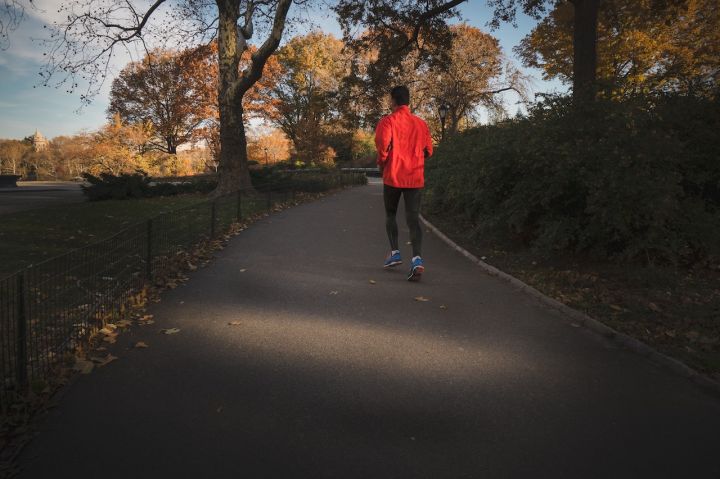The concept of glycogen has been mentioned more than once in our previous workout ingredients and in our recent series of articles on "Fitness supplements", which is a very basic concept in nutrition and fitness. However, considering that many people who are new to fitness don't know much about it, i'd like to introduce it today.

When your body needs energy, it can use its glycogen stores. These molecules are stored mainly in your liver and muscles. From these storage points, your body can mobilise glycogen quickly when it needs fuel.
What you eat, how often you eat it and how active you are will all affect the way your body stores and uses glycogen. Low-carb and ketogenic diets, along with vigorous exercise, deplete glycogen stores and cause your body to burn fat for energy.

Glycogen production and storage

Most of the carbohydrates we eat are converted into glucose, which is our main source of energy. When the body does not need fuel, glucose molecules are linked together in chains of 8 to 12 glucose units to form a glycogen molecule.
The main trigger for this process is insulin. When you eat a meal containing carbohydrates, your blood sugar level rises accordingly. The increased glucose signals the pancreas to produce insulin, a hormone that helps the body absorb glucose from the bloodstream for energy.
Insulin instructs the liver cells to produce an enzyme, glycogen synthase, which holds the glucose chains together. As long as glucose and insulin remain plentiful, glycogen molecules can be transported to the liver, muscles and even fat cells for storage.
Glycogen accounts for about 6% of the total weight of the liver. Much less is stored in the muscles (only 1% to 2%), which is why we run out of energy so quickly (and feel fatigued so quickly) during strenuous exercise.
The amount of glycogen stored in these cells depends on the amount of activity you do, the energy you expend at rest and the type of food you eat. Glycogen stored in the muscles is mainly used by the muscles themselves, while glycogen stored in the liver is distributed throughout the body - mainly in the brain and spinal cord.
Glycogen should not be confused with glucagon (a hormone), which is also important in carbohydrate metabolism and blood sugar control.
How your body uses glycogen

At any one time, you have about 4 grams of glucose in your blood. When insulin levels start to drop, either because you haven't eaten or because glucose is consumed when you exercise, insulin levels also drop.
When this happens, an enzyme called glycogen phosphorylase starts to break down glycogen to provide the body with glucose. For the next 8 to 12 hours, glucose from liver glycogen becomes the body's main source of energy.
Why carbohydrates are important for exercise

During periods of inactivity, your brain consumes more than half of your body's blood sugar. On an average day, the brain requires about 20% of the body's energy needs in terms of glucose.
Glycogen and diet

Your diet and the amount of exercise you do can also affect glycogen production. This effect is particularly noticeable if you are on a low-carb diet, as the main source of glucose synthesis, carbohydrates, is suddenly restricted.
When you first start a low-carb diet, your body's glycogen reserves may be severely depleted and you may experience symptoms of fatigue and mental sluggishness. Once your body adjusts and begins to renew its glycogen stores, these symptoms will begin to subside.
In addition, any degree of weight loss will have the same effect on glycogen stores. Initially, you may experience a rapid loss of weight. After a period of time, your weight may stabilise and you may even gain weight.
Reasons for a period of weight loss stagnation

This phenomenon is partly due to the composition of glycogen, which is mainly water. In fact, the water in these molecules is three to four times the weight of glucose itself.
The rapid depletion of glycogen at the start of the diet therefore leads to weight loss. Over time, glycogen stores are renewed and water weight begins to return. When this happens, weight loss may stagnate or rebound.
The initial weight loss gains come from water, not fat, and are only temporary. The fat loss will continue despite the onset of a short-term stagnation period.
Glycogen and exercise

The body can store approximately 2000 calories of glucose in the form of glycogen. For endurance athletes, who burn that many calories in a few hours, the amount of stored glucose can be a barrier. When these athletes run out of glycogen, their performance starts to deteriorate almost immediately - a state often referred to as 'hitting the wall'.
If you are playing a strenuous sport, there are a number of methods used by endurance athletes to help you adjust your form.
Carbohydrate intake.

Some athletes consume an excessive amount of carbohydrates prior to an endurance event. While extra carbohydrates will provide plenty of energy, this method has fallen out of favour as it can also lead to water weight overload and digestive problems.
Consumption of glucose ointment (quick refill).

Energy ointments containing glycogen can be consumed in advance or when needed to boost blood sugar levels.
Eating a low-carb ketogenic diet.






